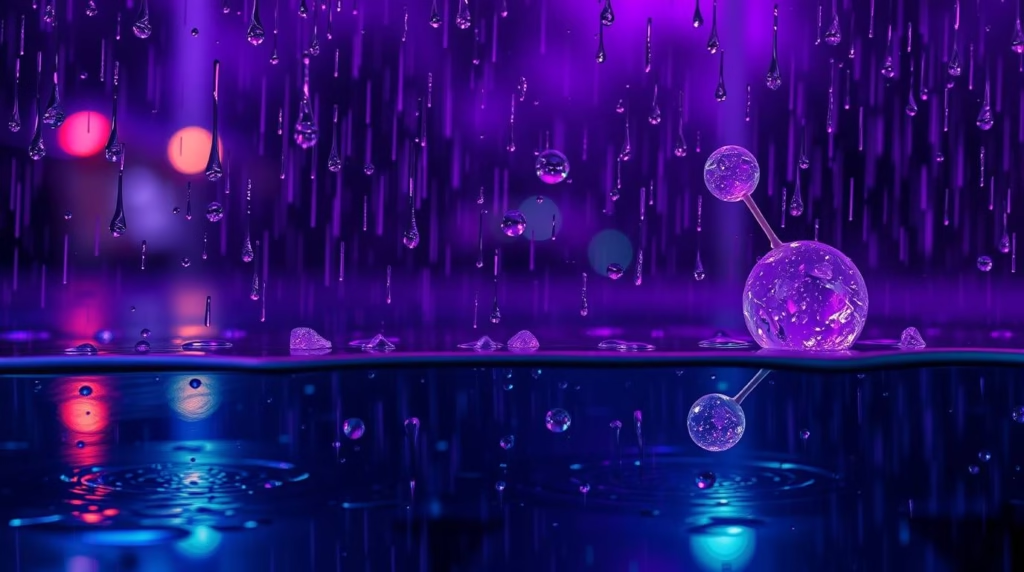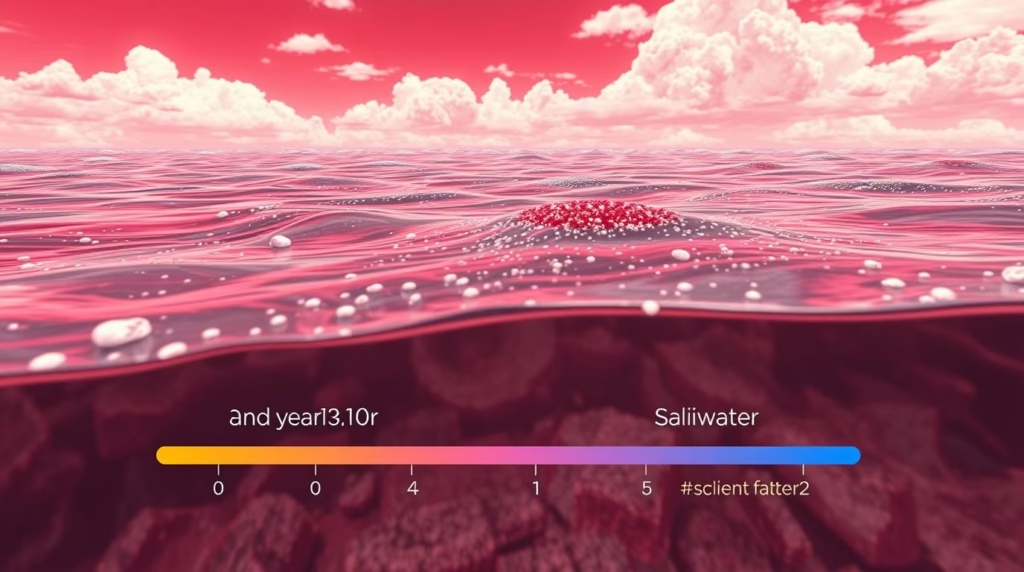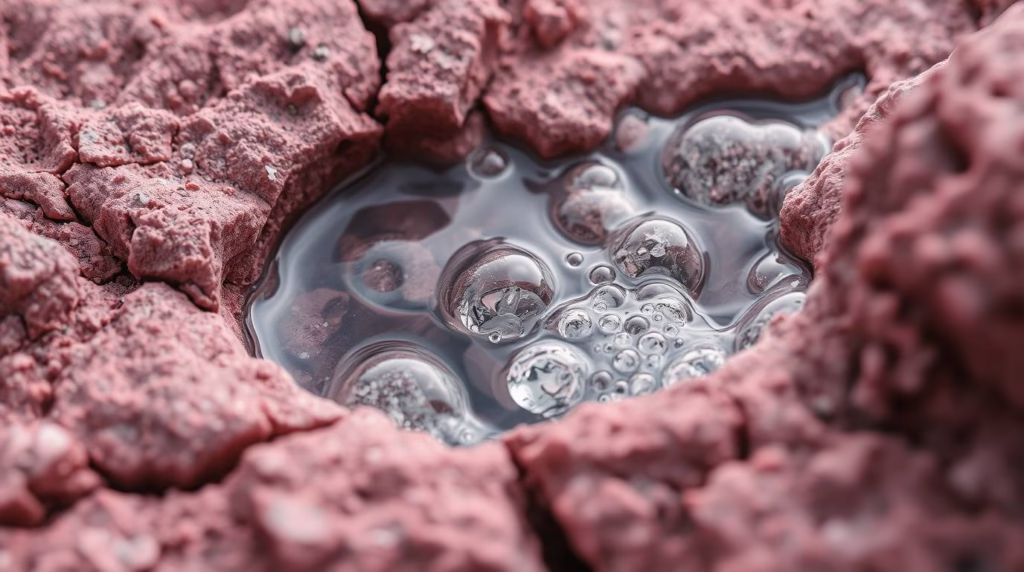The Story of Ancient Water and a Scientist’s Unusual Taste Test
Introduction: A Journey Beneath the Surface
The Earth we walk upon every day conceals mysteries that extend far beyond human imagination. Secrets about the planet’s beginnings, evolutionary cycles, and the hidden ecosystems that flourish in the absence of sunlight can be found deep beneath the rocky layers. One such discovery captured worldwide attention in 2016, when geoscientist Barbara Sherwood Lollar and her team unlocked one of the oldest sources of water trapped deep within the planet.
This finding was remarkable not only because it gave scientists a glimpse into ancient geological history, but also because it raised profound questions about life’s ability to endure extreme environments. In an unexpected turn of events, Sherwood Lollar herself chose to sample this primordial water, making the finding both historically significant and unforgettable to her personally.
The following exploration delves into the story behind this bizarre yet important event—examining the science of ancient waters, the unusual methods involved in their study, and the broader implications for understanding Earth’s evolution and even extraterrestrial life.
The Discovery of the World’s Oldest Water
Water is often considered one of the most fundamental resources for sustaining life. While we are accustomed to fresh surface water from rivers, lakes, and rain, some of Earth’s water sources are unimaginable in age and origin. In a mine located in Ontario, Canada, Sherwood Lollar and her colleagues identified water that had been isolated underground for billions of years.
This discovery did not happen overnight. For decades, geologists had been analyzing fluid inclusions—tiny droplets of ancient water trapped inside minerals. These samples provided clues about the chemistry of Earth’s early environment. But unlike microscopic inclusions, the water found in Canada existed in significant pools within underground rock fractures.
Through advanced isotope analysis and radiogenic dating, the team confirmed that the water was at least two billion years old, making it the oldest free-flowing water ever discovered on Earth. This astonishing find reshaped scientific perspectives, hinting that ancient sub-surface reservoirs might have harbored conditions for microbial life long before surface ecosystems flourished.
What Made This Water Special?
The ancient water wasn’t similar to modern groundwater or seawater. Instead, it was enriched with dissolved minerals and gases, making its composition entirely unique. Some key features included:
High salinity: Far saltier than today’s oceans.
Chemical richness: Contained hydrogen, methane, and sulfates, which can serve as energy sources for microbes.
Long isolation: The water had not circulated or mixed with surface sources for billions of years.
These characteristics indicated that the water had been trapped since early geological formations and preserved within rock fractures. Essentially, this wasn’t just “old water”—it was a direct time capsule from Earth’s distant past.
The Scientist’s Taste Test: A Human Connection to Ancient Earth
Amid the rigorous scientific protocols, a surprisingly human moment unfolded. Sherwood Lollar, known for her humor and curiosity, decided to taste the ancient liquid herself.
“If you’re a geologist who works with rocks, you’ve probably licked a lot of rocks,” she joked in an interview. In fact, field geologists frequently use rock-licking to identify textures and minerals. But this was different. Instead of a quick taste of dusty stone, she sampled an actual billion-year-old water source.
Her description was vivid:
“Very salty and bitter”
“Much saltier than seawater”
A strong flavor that validated its distinct mineral content
Fortunately, the sip did not have negative effects. There were no science-fiction consequences—no instant illness, no strange transformations—just an unforgettable glimpse into Earth’s chemical history.
From an experiential perspective, this act symbolized more than curiosity. It bridged the gap between abstract scientific discovery and human sensory perception, reminding us that science often involves deeply personal, tactile experiences.
Scientific Breakthroughs from the Research
Sherwood Lollar’s findings, published in Nature in 2016, were far more profound than a quirky taste test. Her paper established key insights into the nature of Earth’s deep biosphere, which is still one of the least understood realms of our planet. Some major breakthroughs included:
Evidence of Ancient Water Reservoirs
Large volumes of water might stay isolated for billions of years deep beneath, as the discovery showed. This challenged prior assumptions that most groundwater cycles within millions—not billions—of years.
Potential Microbial Ecosystems
The chemical richness of the water suggested that it could support microorganisms without depending on sunlight. By feeding off chemical reactions between rock and water, microbes might sustain independent ecosystems.
Implications for the Origin of Life
If life could thrive in underground chemical environments without sunlight, then similar processes might explain how early Earth life began. It also opens the door to exploring whether Mars or other planetary bodies may host subsurface life.
Energy Pathways Beyond Photosynthesis
The discovery emphasized that not all life requires sunlight as an energy source. Instead, chemosynthesis—life fueled by mineral reactions—can sustain whole ecosystems.

Ancient Water and the Search for Extraterrestrial Life
One of the most exciting implications from Lollar’s research is its relevance to astrobiology. Planets and moons with rocky crusts and subsurface reservoirs—like Mars, Europa, or Enceladus—might harbor similar ancient waters. If so, they could provide stable environments where life might persist, shielded from harsh surface conditions.
The salty, chemically active ancient waters beneath Earth serve as an analogue for alien worlds. Scientists now consider these deep biospheres crucial to future space exploration, potentially guiding upcoming missions in the search for extraterrestrial life.
How Water Shapes Our Understanding of Earth’s Story
From a broader perspective, Sherwood Lollar’s work contributes to one of science’s most fundamental questions: how has water influenced the shaping of our planet?
Geological Impact: Water deep underground plays a role in shaping rock cycles, mineral formations, and even tectonic activity.
Biological Influence: Water-rich environments create niches for microbial ecosystems, extending the domain of life into places once thought uninhabitable.
Historical Record: Ancient trapped waters act as chemical time capsules, allowing scientists to reconstruct past conditions of Earth’s atmosphere and crust.
By simply analyzing a drop of water, scientists can unlock details about the distribution of gases, minerals, and microbial communities billions of years ago.
Humanizing Science: Why the Taste Test Resonated Globally
While isotope data and published papers are scientifically vital, it was the anecdote of Sherwood Lollar taking a sip of the ancient water that captured global headlines. The act humanized an otherwise highly technical discovery.
People naturally relate to taste and sensory experiences. When they imagine a scientist sipping “the oldest water on Earth,” the story becomes relatable, bridging the gap between complex science and everyday curiosity. It turned an esoteric geological finding into a narrative accessible to wider audiences, fueling popular interest in both geology and astrobiology.
Lessons from the Discovery
The discovery of ancient water and the iconic taste test offers multiple lessons:
Curiosity Drives Breakthroughs
Science isn’t just about logic and calculation; it’s sparked by curiosity—even playful moments lead to profound insights.
Earth Holds Untapped Secrets
Despite centuries of research, our planet continues to surprise us with discoveries hidden deep underground.
Life Is Resilient
Microbes’ ability to survive in extreme, isolated conditions expands the possibilities of where life can endure.
Inspiration for Space Exploration
We get ready for the hunt for extraterrestrial life by researching Earth’s ancient biospheres.
Conclusion: A Sip That Challenged Science
Sherwood Lollar’s decision to taste water that had been sealed underground for billions of years may sound whimsical, but it symbolized something greater: a bridging of human curiosity with deep scientific discovery. The water, far saltier than seawater and untouched by surface cycles, became both a physical link to Earth’s distant past and a metaphor for science’s endless well of mysteries.
Her latter work, which is now essential to comprehending deep biospheres, has far-reaching consequences for astrobiology, biology, geology, and the beginnings of life itself.
In the end, a sip of ancient water offered humanity a rare flavor of our planet’s hidden history—proof that sometimes the path to profound wisdom begins with a single, curious taste.
❓ Frequently Asked Questions (FAQ)
1. How old is the oldest water ever discovered on Earth?
It is estimated that the oldest water ever discovered on Earth is almost two billion years old. It was discovered deep underground in a Canadian mine, trapped within rock formations. Unlike surface water, this ancient reservoir remained isolated for billions of years, making it a unique geological time capsule.
2. Who discovered the world’s oldest water?
The discovery was led by Dr. Barbara Sherwood Lollar, a geoscientist from the University of Toronto. Her groundbreaking research shed light on Earth’s deep biosphere and how life can persist in extreme environments.
3. Why did Sherwood Lollar taste the ancient water?
In a moment of curiosity, Sherwood Lollar decided to taste the billion-year-old water. She jokingly remarked that geologists often “lick rocks” to identify minerals. The sample, however, was extremely salty and bitter—much saltier than seawater. Fortunately, she experienced no adverse side effects from the taste test.
4. What did scientists learn from studying ancient water?
The research revealed that the water was rich in dissolved gases such as hydrogen and methane, which could serve as an energy source for microbial life. This means entire ecosystems could exist underground, independent of sunlight, powered by chemical reactions between rocks and water.
5. Why is the ancient water discovery important for astrobiology?
The finding suggests that life does not always need sunlight to survive. If microbes can thrive in deep, isolated water trapped underground on Earth, similar lifeforms might exist on Mars, Europa, or Enceladus, where liquid water may also be sealed beneath the surface.
6. Can humans drink ancient water safely?
While Sherwood Lollar had no ill effects from tasting a tiny sip, the water is not suitable for human consumption. Its extreme salinity and high mineral content make it undrinkable as a water source, but invaluable for scientific study.

📌 Key Takeaways: Sherwood Lollar’s Ancient Water Discovery
-
🌍 Oldest Water on Earth – Discovered deep in a Canadian mine, this water is estimated to be 2 billion years old, making it the oldest free-flowing water ever found.
-
🧪 Unique Chemistry – The water was far saltier than seawater, enriched with hydrogen, methane, and other gases that could fuel microbial life.
-
🧑🔬 Sherwood Lollar’s Taste Test – Out of curiosity, geoscientist Sherwood Lollar tasted the ancient water, describing it as salty and bitter, but suffered no ill effects.
-
🔬 Scientific Breakthroughs – The discovery proved that subsurface ecosystems can exist without sunlight, relying instead on rock-water chemical reactions.
-
🚀 Astrobiology Implications – Findings support the possibility of underground life on Mars and icy moons like Europa or Enceladus, strengthening future space exploration missions.
-
💡 Why It Matters – Beyond quirky headlines, this research reshaped our understanding of Earth’s deep biosphere, life’s survival mechanisms, and early planetary history.
for more like this, visit: www.bulletinbuzzs.com
